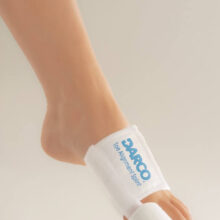Calibrated Midfoot Compression Wrap
Login For Dealer Pricing
The Bio Skin Calibrated Midfoot Compression Wrap provides an attachment point for the Hallux Control Strap or Weil Osteotomy Strap without covering the ankle. The calibration lines may be used to measure changes in swelling of the foot.
Provides an attachment point for the Weil Digit Strapping System without covering the ankle.





